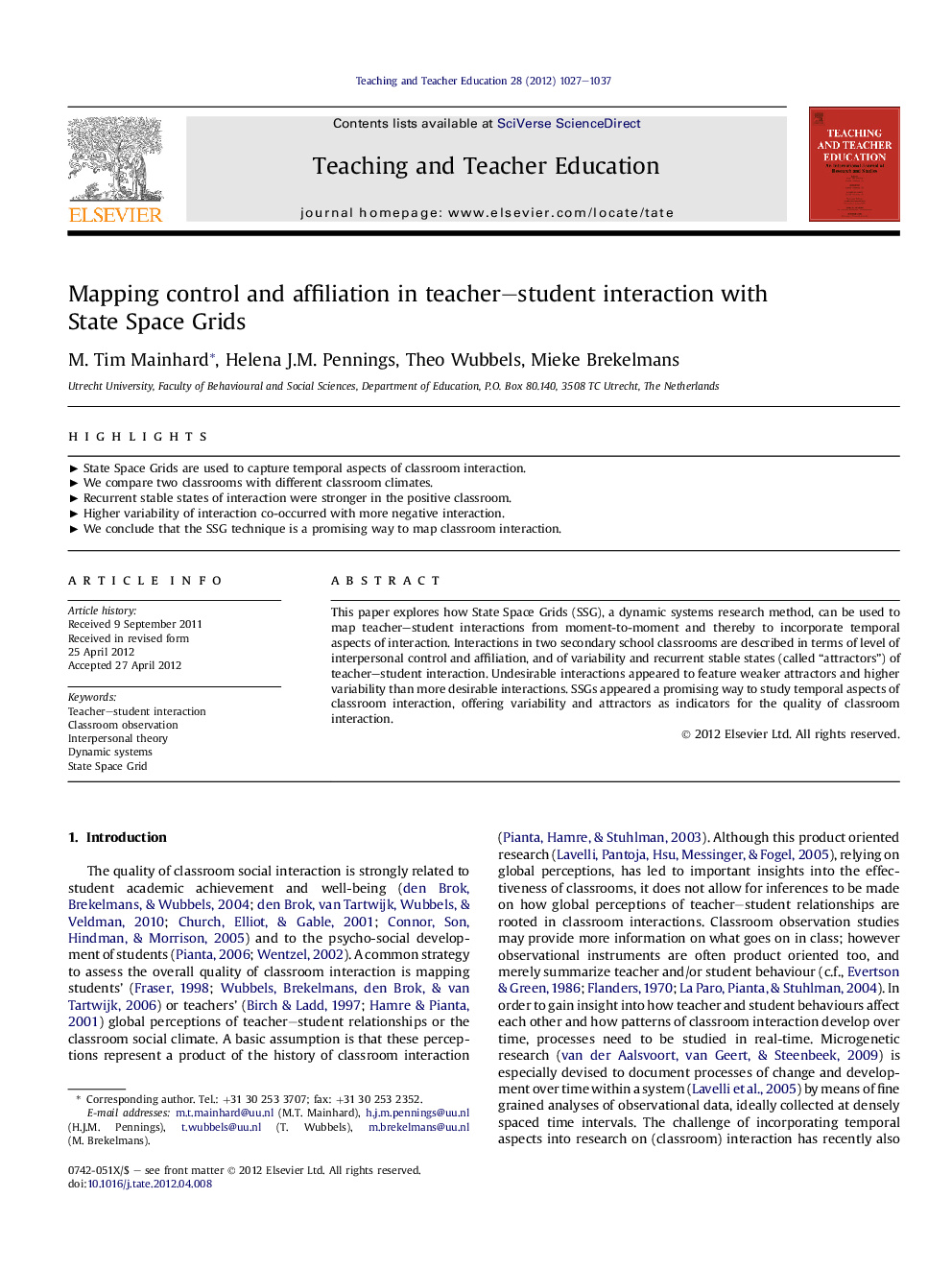| Article ID | Journal | Published Year | Pages | File Type |
|---|---|---|---|---|
| 374192 | Teaching and Teacher Education | 2012 | 11 Pages |
This paper explores how State Space Grids (SSG), a dynamic systems research method, can be used to map teacher–student interactions from moment-to-moment and thereby to incorporate temporal aspects of interaction. Interactions in two secondary school classrooms are described in terms of level of interpersonal control and affiliation, and of variability and recurrent stable states (called “attractors”) of teacher–student interaction. Undesirable interactions appeared to feature weaker attractors and higher variability than more desirable interactions. SSGs appeared a promising way to study temporal aspects of classroom interaction, offering variability and attractors as indicators for the quality of classroom interaction.
► State Space Grids are used to capture temporal aspects of classroom interaction. ► We compare two classrooms with different classroom climates. ► Recurrent stable states of interaction were stronger in the positive classroom. ► Higher variability of interaction co-occurred with more negative interaction. ► We conclude that the SSG technique is a promising way to map classroom interaction.
